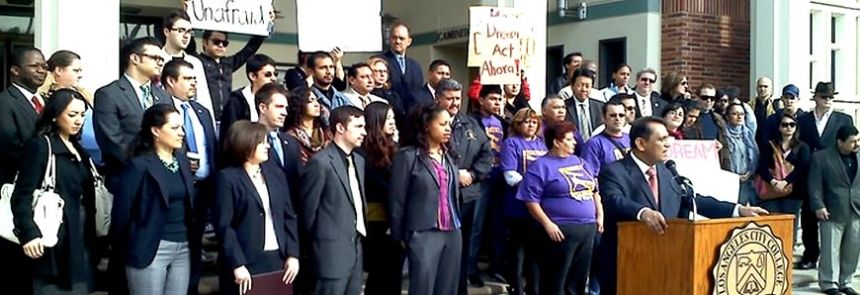Space is a hard sell these days. Aside from the persistent small community of die-hard space advocates and New Space entrepreneurs, the relevance of space to the society at large has generally declined since the grand achievements of the Space Race and even such great feats as the building of the ISS have garnered rather modest public attention. In recent years we have had more active astronauts than ever in history, yet few among the general public can name a single one. An appreciation of space science seems to have improved in recent years by virtue of the impressive visuals offered by orbital telescopes, space probes, and rovers. But the general public commitment to space development still dwindles in the face of mounting domestic issues. Most recently we have seen a drastic contraction of national space agencies in response to the current global economic turmoil. Programs are reduced, cut, or under looming threat. We hear pronouncements of deemphasis of costly manned space activity by the major national players in space development. The world leader in space, NASA, now drifts aimlessly, its premier launch system–controversial from the start, often dismissed as a boondoggle, and dragged along for far too long–finally succumbing to obsolescence without a replacement at-hand, leaving the agency dependent upon foreign nations and struggling for a semblance of direction and purpose. In this past few years, finding itself abandoned on both right and left sides of the political fence, it faced the very real possibility of being shut down altogether and now its partner DARPA talks of century-long space programs with no government involvement at all because the very idea of the US government having the coherence to accomplish anything that takes more than one electoral cycle to do has become implausible.
Overconfident to the extreme after recent very significant, yet still modest in the broad perspective, successes, the newest faction of the commercial space community, the New Space entrepreneurs, boast their readiness to pick up the slack, not quite cluing into the fact that the rope isn’t just dropped, it may be cut! Space industry has never been a very big industry despite the seemingly gigantic sticker prices of its hardware. The global space industry accounts for around 160 billion dollars annually. Soft drinks account for 350 billion. Coca Cola is bigger than NASA. Meanwhile, the lion’s share of commercial space service has always been for governments and the remaining largely telecommunications applications –after 50 years still the only proven way to make money in space- face slow decline as latency becomes increasingly critical to mainstream communications. The ‘grand convergence’ long anticipated in computing has now focused on the Internet which is steadily assimilating all forms of mainstream communication and media distribution. Despite a few service providers of last resort, satellites simply don’t work as a host for conventional Internet and physics precludes any solution to that. We owe recent surges in launch service demand more to war than anything else. Ultimately, we’re not looking at a privatization of national space systems. We’re looking at their outright obsolescence and an overall decline in the relevance of space activity of any sort short of science applications, which have no more need of astronauts than for manned submersibles and for the same reasons. The need for space services will not disappear but, as it stands now, has little likelihood of growth either–except on the back of war. Logically, what commercial space desperately needs is a program for the systematic cultivation of new applications the space agencies have never seriously pursued–new ways to make money there, particularly in an industrial context. And what do the mavericks of New Space have on offer in that context? Space tourism for the rich, during a time of global recession…
There is a great misconception today that the challenges of commercial space are merely technological problems waiting to be solved by that one new breakthrough propulsion technology that never materializes. But commercial air travel did not become ubiquitous by virtue of flight technology becoming miraculously cheap and powerful like microprocessors. It became ubiquitous by realizing markets of scale that supported aircraft of enormous size needing very large minimum operation economies of scale, where populations of millions in communities with well-heeled comfortable middle-classes are necessary to generate sufficient traffic to justify the existence of a single airport. A single A380 airliner costs almost as much as the development of a typical unmanned launch system. Air travel was never particularly successful in an industrial sense. Most stuff still moves around the world at the 20mph speed of ships. The New Deal and the remnant air support infrastructure of WWII were together probably more responsible for the modern airline industry than any engine or aircraft design–because they created the market. If it takes a population of millions to justify the existence of a single conventional airport for conventional airliners, what then a Pan-Am Orion?
For those who look to space as an insurance policy for life and the human civilization, this situation should be of much concern. Whether it be for averting the potential disasters of asteroid strikes or as a redoubt for some fraction of civilization in the event of any terrestrial disaster, a vast space-based infrastructure must be continually at-hand for such capability. Yet these kinds of threats do not themselves seem to have ever inspired sufficient concern in the general public or political leaders to demand such capability be established and maintained for its own sake. You cannot talk in public about such space contingencies and be taken remotely seriously. One could say we have been a bit too lucky as a civilization. There have been no small asteroid impacts in historic memory and few global existentially threatening events beyond those we human beings have created –and we’re very good at systematic denial of those. So this contingency capability relies on being incidental to other space development. That development has been inadequate for that to date, counting on future expansion that has never materialized. What then as we watch that development fizzle-out altogether? The essential cultural relevance of space development can be seen as crucial to the long-term survival of our species, and that’s in marked decline.
Continue reading “Solution In Search Of A Problem — Nationalism, Environmentalism, and Space's struggle for cultural relevance.” »











